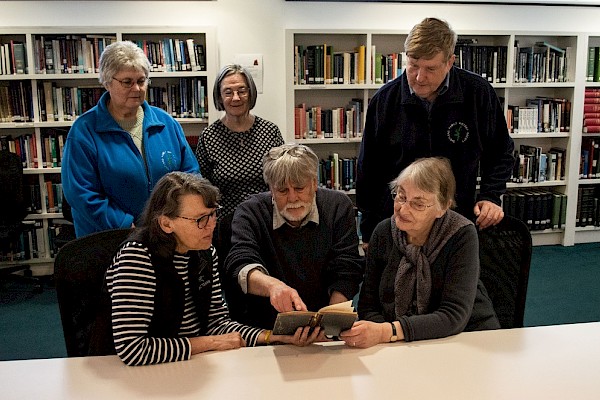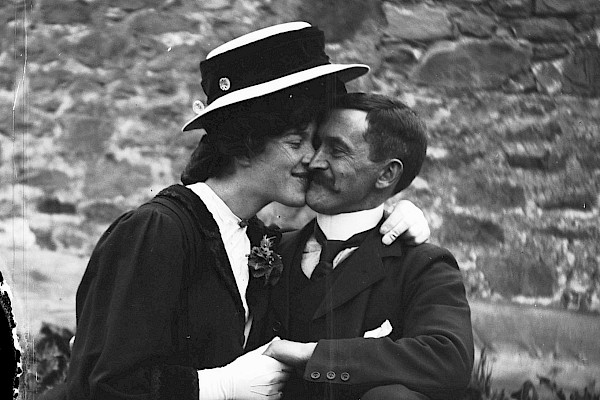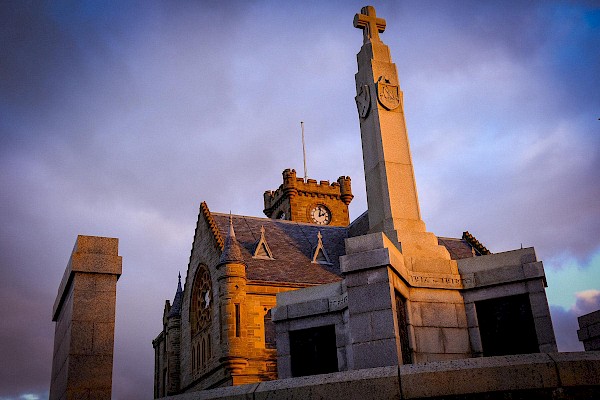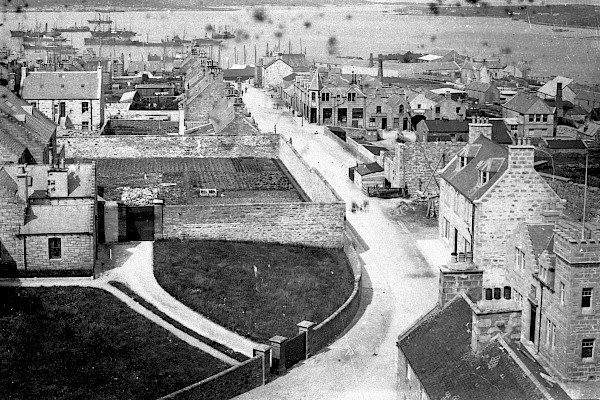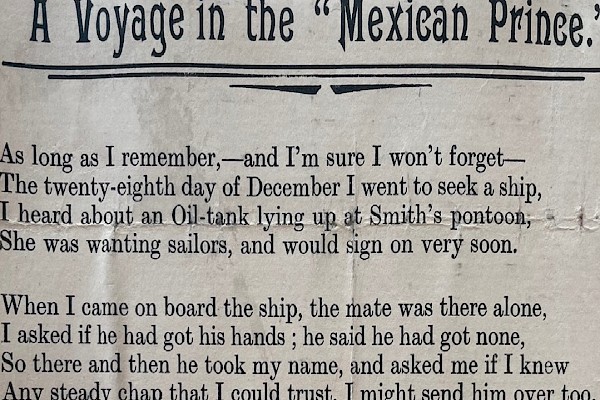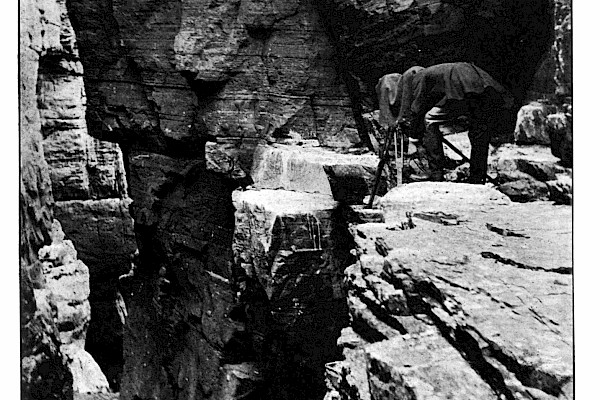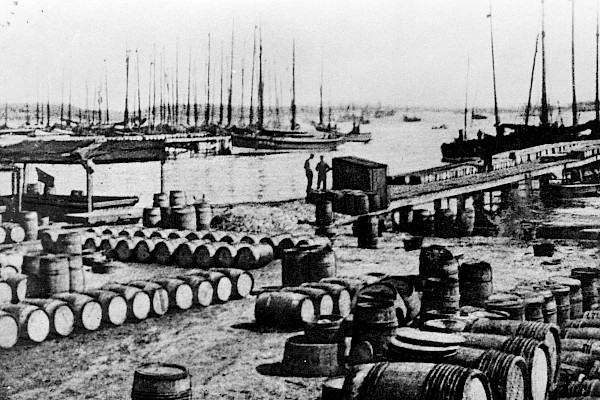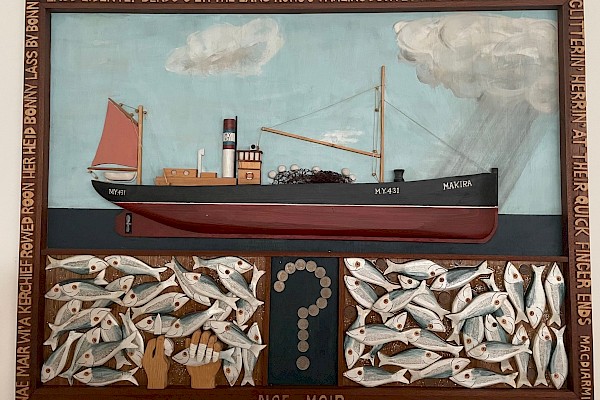Reading in the Archives
Mathew lives at Tresta and is at present a postgraduate student at Edinburgh University, studying Shetland's attitude to constitutional change during the oil era. This blog is a reflection on his time researching in the Archives.
After being founded in 1976 by the newly-formed Shetland Islands Council (SIC), the Shetland Archives have acquired an impressive collection of legal documents, church records, minute books, newspapers, university theses and audio recordings, while also possessing a varied range of privately donated documents and papers. Visitors with an interest in virtually any aspect of Shetland’s history can find material to aid their search, whether this be tracing family histories, learning more about the history of a local area or researching a specific part of Shetland’s past.
In my experience, the Archives staff have an impressive knowledge of Shetland’s history and heritage, and are always happy to help point visitors in the right direction. Unlike many other archives, visitors can – when there isn’t a pandemic – turn up at the Shetland Archives at any time without an appointment, which increases their accessibility to the general public.
I have been a regular visitor at the Archives for the last four years, first making use of its records when writing my undergraduate dissertation on the postwar Shetland Liberal Party. It has been an invaluable resource for researching my PhD thesis on the experiences of Scotland’s island groups towards constitutional debates in recent decades. I try to visit the Archives whenever I am in Shetland but, inevitably, there is never enough time to look at everything I need. Still, this gives me an excuse to return when I’m next up.
My research has greatly benefited from the materials gathered during the Shetland Archives’ 44 years of existence. Most recently, I have used the Archives’ records to research the process leading up to the creation of the Shetland Islands Council in 1974. From around 1966, the Scottish Office under Harold Wilson’s Labour government began planning a series of reforms and amalgamations to local services and the structure of local government in Scotland. With 33 police forces, 199 water boards and 412 local authorities across Scotland, often covering a patchwork of boundaries and requiring certain functions to be shared between authorities, there was a clear case for rationalising the system.
However, politicians and activists in Shetland – as in Orkney – opposed plans to amalgamate the islands’ services and local authorities with the Scottish mainland. Most famously, Secretary of State for Scotland Willie Ross faced unprecedented protests during his 1967 visit to Shetland, encountering a roadblock in the South Mainland and finding that the Scottish Office vessel he slept in covered in anti-amalgamation slogans aimed at himself and the government. This campaign, alongside more conventional representations to the government, failed to prevent Shetland being incorporated within the North of Scotland Water Board and the Northern Constabulary. Nevertheless, further campaigning in the following years successfully persuaded the government to grant Shetland, alongside Orkney and the Western Isles, its own unitary local authority, later to become the SIC.
 The Archive’s council minutes have provided my main source for researching this topic. Compared to the minutes of other local councils I’ve previously accessed, Shetland’s council minutes are very well preserved and indexed, making them easy to sift through. For this period I used the minutes of the SIC’s predecessor bodies, the Zetland County Council and Lerwick Town Council, to uncover the main decisions and points of discussion made by the full councils and their various subcommittees. Although these rarely include detailed transcripts of the discussions, they offer a useful starting point for identifying when meetings of significance on a certain topic were held. These can then be used to trace reports of the meetings in media records, which often published descriptive reports of high-profile meetings, especially during this period. For my research, The Shetland Times has tended to serve this role. The Archives holds it on microfilm back to its first publication in 1872.
The Archive’s council minutes have provided my main source for researching this topic. Compared to the minutes of other local councils I’ve previously accessed, Shetland’s council minutes are very well preserved and indexed, making them easy to sift through. For this period I used the minutes of the SIC’s predecessor bodies, the Zetland County Council and Lerwick Town Council, to uncover the main decisions and points of discussion made by the full councils and their various subcommittees. Although these rarely include detailed transcripts of the discussions, they offer a useful starting point for identifying when meetings of significance on a certain topic were held. These can then be used to trace reports of the meetings in media records, which often published descriptive reports of high-profile meetings, especially during this period. For my research, The Shetland Times has tended to serve this role. The Archives holds it on microfilm back to its first publication in 1872.
Other sources I’ve used at the Shetland Archives include the New Shetlander, a literary and historical magazine founded in 1947, censuses and other demographic and economic surveys, and the Archives’ extensive audio collection. The latter includes recordings from archived programmes of BBC Radio Shetland and a number of oral history interviews conducted with Shetlanders from a range of backgrounds in the last four decades. For example, I have used an interview with former SIC Convener Edward Thomason conducted in the 1990s to learn about his perspective of changes to local government in the 1960s and 1970s.
When the Shetland Archives are eventually able to reopen, I would urge anyone with an interest in any area of Shetland’s history and heritage to pay them a visit, along with the equally excellent Shetland Museum. From personal experience, you will likely find more than you expect. In the meantime, there are some resources that can be accessed online. The archive catalogue, containing over 100,000 entries, is entirely available online, allowing prospective visitors to identify relevant records in advance of their visit. The Shetland Museum and Archives also have an online photo library containing over 60,000 images, which may provide perfect escapism for those of us currently remaining at home.
Did you know that you can access a wealth of Archives information in our online Archives Catalogue.
 We hope you have enjoyed this blog. We rely on the generous support of our funders and supporters to continue our work on behalf of Shetland. Everything we do is about caring for Shetland's outstanding natural and cultural heritage on behalf of the community and for future generations. Donations are welcomed and are essential to our work.
We hope you have enjoyed this blog. We rely on the generous support of our funders and supporters to continue our work on behalf of Shetland. Everything we do is about caring for Shetland's outstanding natural and cultural heritage on behalf of the community and for future generations. Donations are welcomed and are essential to our work.


